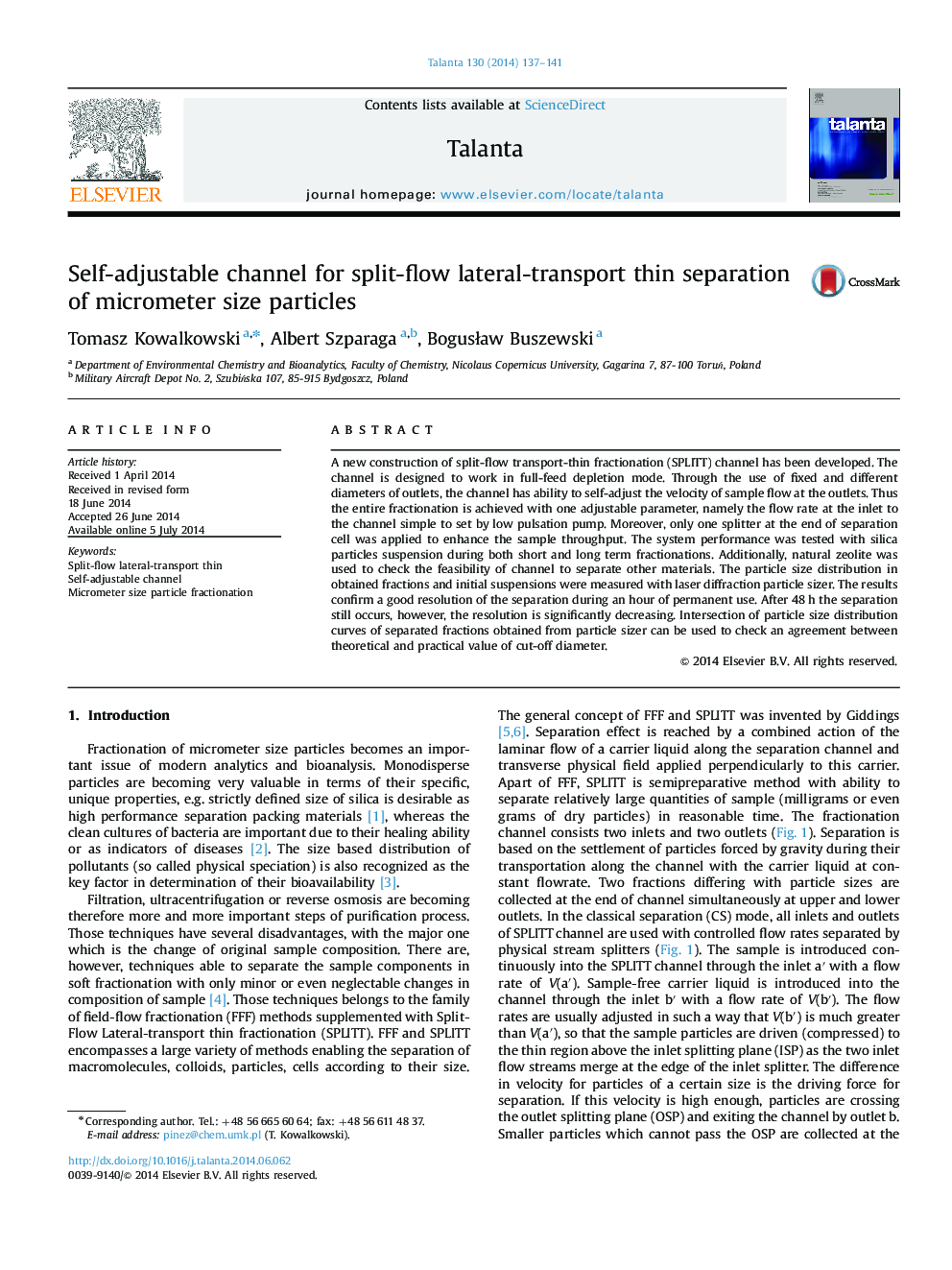| Article ID | Journal | Published Year | Pages | File Type |
|---|---|---|---|---|
| 1243571 | Talanta | 2014 | 5 Pages |
•SPLITT channel has been constructed with one splitter and self adjustable flow rates at the outlets.•Fractionation performance has been tested with suspension containing silica particles.•Laser diffraction particle sizer was used to calculate the silica size in obtained fractions.•We suggest to use the intersection of PSDs for both fractions as the real measure of cut-off diameter.
A new construction of split-flow transport-thin fractionation (SPLITT) channel has been developed. The channel is designed to work in full-feed depletion mode. Through the use of fixed and different diameters of outlets, the channel has ability to self-adjust the velocity of sample flow at the outlets. Thus the entire fractionation is achieved with one adjustable parameter, namely the flow rate at the inlet to the channel simple to set by low pulsation pump. Moreover, only one splitter at the end of separation cell was applied to enhance the sample throughput. The system performance was tested with silica particles suspension during both short and long term fractionations. Additionally, natural zeolite was used to check the feasibility of channel to separate other materials. The particle size distribution in obtained fractions and initial suspensions were measured with laser diffraction particle sizer. The results confirm a good resolution of the separation during an hour of permanent use. After 48 h the separation still occurs, however, the resolution is significantly decreasing. Intersection of particle size distribution curves of separated fractions obtained from particle sizer can be used to check an agreement between theoretical and practical value of cut-off diameter.
Graphical abstractFigure optionsDownload full-size imageDownload as PowerPoint slide
